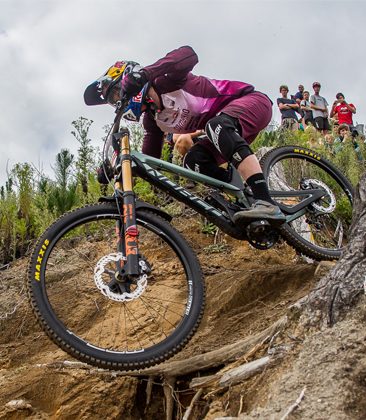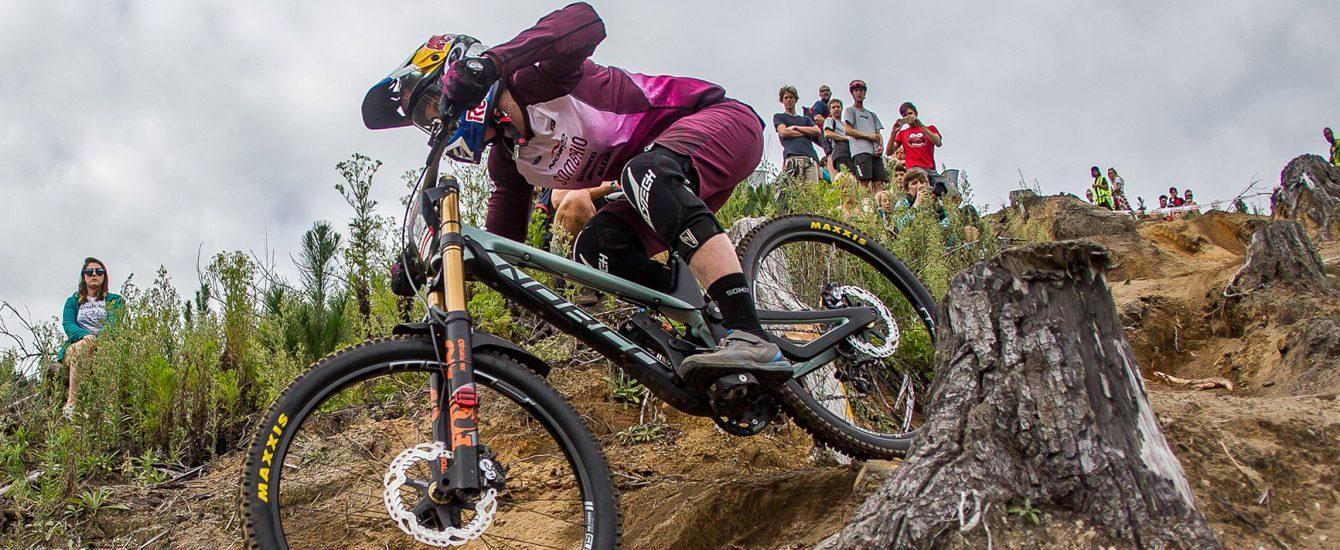SAY WHAT? THE DIFFERENCE BETWEEN 20X110MM THRU-AXLES AND 20X110MM BOOST THRU-AXLES EXPLAINED
In the bike industry's never-ending quest to make nothing compatible with anything else, there are now two types of 20mm through axle systems: 20x110mm and 20x110mm Boost. Yes, really. But it's going to be OK. Let's go through this and help make sense of it together.

Does this even apply to me?
XC and Trail bikes get a pass on this one. If your bike uses a 15mm axle, as nearly everything outside of a full blown DH bike does, you can go back to watching videos on Pinkbike. Nothing to see here. But if you currently have or intend to purchase a DH fork or heavy duty single-crown fork with a 20mm through axle, or a wheelset for such a fork, the next few minutes of reading will hopefully save you some heartache and return shipping costs. As we write this in late July, 2018, many fork manufacturers are beginning to move their disc brake mount location outward, making their forks compatible with "20x110mm Boost" hubs. Total spacing between the fork legs is still 110mm, and the axle diameter is still 20mm, so what does the "Boost" mean here? The difference is disc brake rotor placement and flange width, where the spokes attach to the hub. Although both hubs measure 110mm wide, the boost version features hub flanges that have been moved out 5mm to each side, which also pushes the disc mount closer to the fork. You can see this difference in the photo we have to the left. The goal of widening the hub flanges is to create a better bracing angle for your spokes and in turn a stronger wheel. These wider hub flanges mean the new 20x110mm Boost hubs have shorter end caps, and a whole different hub shell with wider flanges and a wider disc brake mount location. So a traditional 20x110mm (non-Boost) hub can't be truly be converted to 20x110 Boost with just something like a simple end cap swap.Wait, can't I just add a spacer behind my rotor and convert any 20x110 hub to a 20x110mm Boost fork?
Technically, yep. But you lose the advantage of the wider flanges and stronger wheel, and you probably pick up a few disadvantages, too. Because things like rotor spacers almost always mean "weaker," we've chosen to make a specific 20x110mm Boost hub, and that's what we recommend using with 20x110mm Boost forks.

I am a person who buys bicycle things. What's the worst that could happen here?
The worst thing that could happen is that you accidentally buy a new 20x110mm Boost wheel and then realize there's no way to make it fit your standard 20x110mm (non-Boost) fork. If you're in the market for a DH fork or especially a wheelset, take the extra time to determine which 20x110mm front hub your fork requires. Currently the new RockShox BoXXer, Fox 49, DVO Onyx and Suntour’s latest Rux are all using 20x110mm Boost spacing. When in doubt, contact the fork manufacturer or your shop. If you already have a fork and are looking for a the right wheelset, feel free to contact us at tech@notubes.com. Our Flow MK3, Arch MK3, and Arch CB7 rims can all be built up with 20x110 Boost spacing Neo hubs through our custom wheelset builder.

